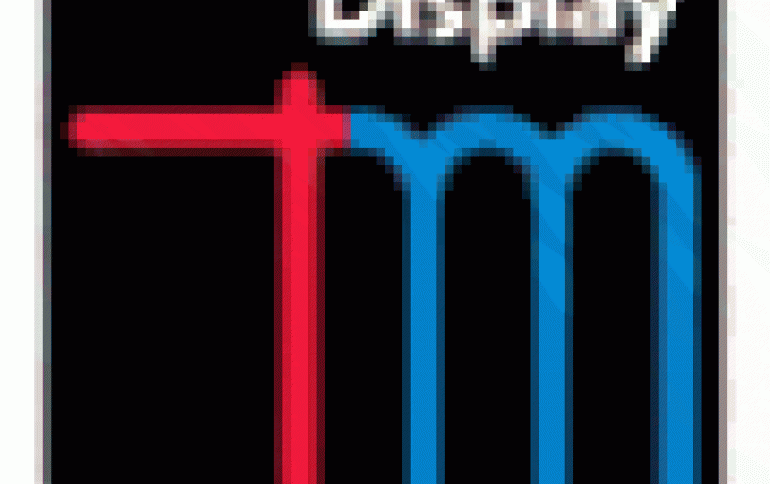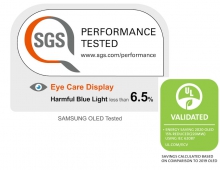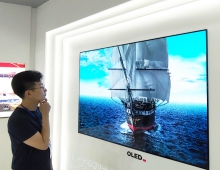
Toshiba Matsushita Display Technology Invests In OLED Displays For Mobile Devices
Toshiba Matsushita Display Technology, Co., Ltd. (TMD) announced the establishment of a new mass production line for organic light-emitting diode electroluminescent (EL) displays, with a capital investment of approximately 16 billion yen ($149,000,000).
The new line, based at TMD?s Ishikawa Works, Kawakita-machi, Nomi-gun, Ishikawa Prefecture, will develop and mass-produce small molecule organic EL panels with TMD?s proprietary low-temperature polysilicon technology starting in October 2009.
Glass substrates of dimension 460mm x 730mm x 0.5mm will be utilized, and production capacity will reach approximately 1.5 million units per month (based on a 2-inch panel size).
Since the fine organic EL layer formed on the glass substrate is a light-emitting device, the organic EL displays provide high-contrast and high-definition images, which can realize high speed motion on the screen without blur and with a wide viewing angle. Furthermore, the organic EL displays feature resource saving features, such as lower power consumption, and less material, since no backlight peripheral components are necessary, contributing to the slim size of the displays.
TMD has acquired experience in the development of small molecule organic EL displays suitable for cellular phones and small-sized mobile devices. TMD also has experience in developing polymer organic EL displays that are appropriate for larger screens. In the past, TMD provided low-volume production of 3.5-inch EL panels in 2005 which wer well accepted in the test market.
Based on the success in optimizing the combination of drive circuit formation and organic materials using low-temperature polysilicon technology, and the success in reducing power consumption to half that of conventional LCDs through the technologies employed in organic EL layer formation, TMD will be ready to launch full-scale mass production of organic EL displays after installation of this new line.
Since organic EL displays allow high-definition images and low power consumption, they are expected to be adopted into devices such as cellular phones, mobile internet devices (MID), and portable navigation devices (PND) . The EL market size is projected to expand to be worth approximately 150 billion yen in FY2010 (based on TMD?s company estimate).
The company plans to produce more than 10,000 sheets/month (730 x 460 x 0.5 thick (mm)), which is translated in approximately 1,500,000 units/month (based on a 2-inch panel size for cellular phones).
Glass substrates of dimension 460mm x 730mm x 0.5mm will be utilized, and production capacity will reach approximately 1.5 million units per month (based on a 2-inch panel size).
Since the fine organic EL layer formed on the glass substrate is a light-emitting device, the organic EL displays provide high-contrast and high-definition images, which can realize high speed motion on the screen without blur and with a wide viewing angle. Furthermore, the organic EL displays feature resource saving features, such as lower power consumption, and less material, since no backlight peripheral components are necessary, contributing to the slim size of the displays.
TMD has acquired experience in the development of small molecule organic EL displays suitable for cellular phones and small-sized mobile devices. TMD also has experience in developing polymer organic EL displays that are appropriate for larger screens. In the past, TMD provided low-volume production of 3.5-inch EL panels in 2005 which wer well accepted in the test market.
Based on the success in optimizing the combination of drive circuit formation and organic materials using low-temperature polysilicon technology, and the success in reducing power consumption to half that of conventional LCDs through the technologies employed in organic EL layer formation, TMD will be ready to launch full-scale mass production of organic EL displays after installation of this new line.
Since organic EL displays allow high-definition images and low power consumption, they are expected to be adopted into devices such as cellular phones, mobile internet devices (MID), and portable navigation devices (PND) . The EL market size is projected to expand to be worth approximately 150 billion yen in FY2010 (based on TMD?s company estimate).
The company plans to produce more than 10,000 sheets/month (730 x 460 x 0.5 thick (mm)), which is translated in approximately 1,500,000 units/month (based on a 2-inch panel size for cellular phones).





















